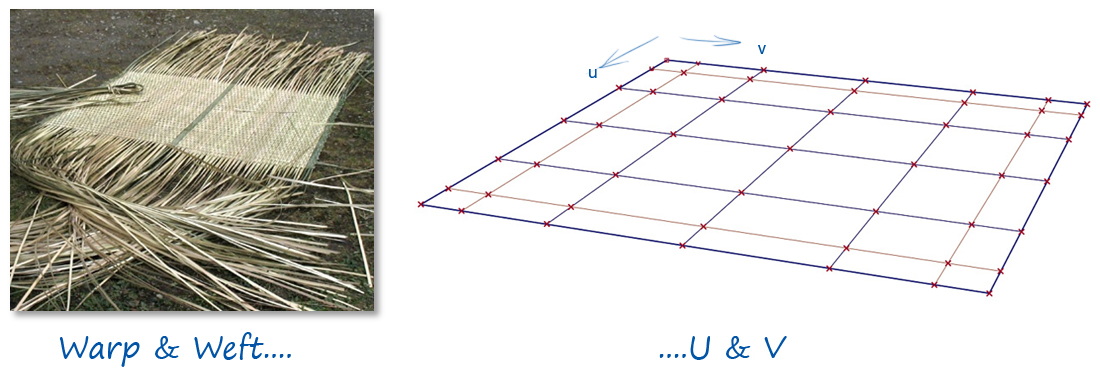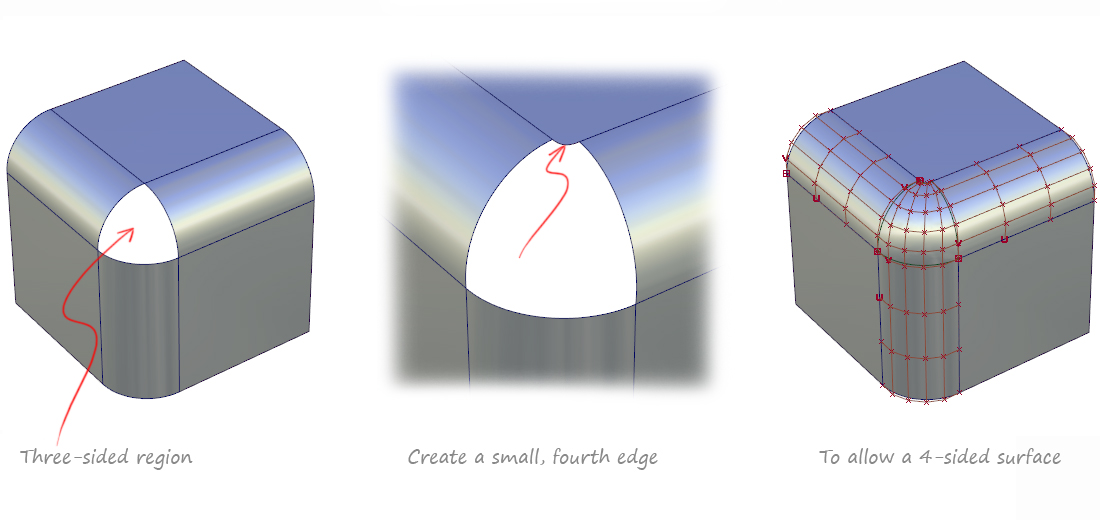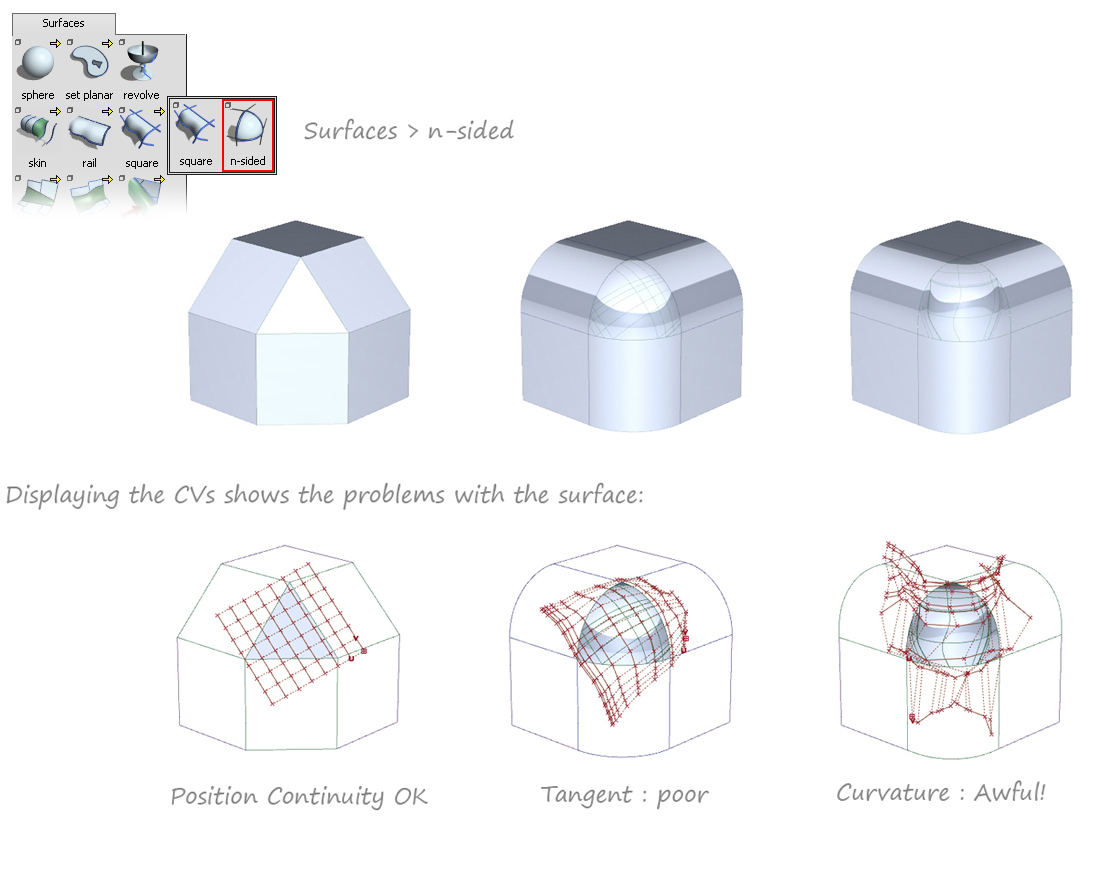NURBS surfaces are inherently four-sided, as they are made up of the two directions, U and V.

Modeling with NURBS is much easier when you use these natural edges. It allows you to build light surfaces, and align the CVs so that they match across the surfaces. A good Alias modeler can 'read' the surface shape from the flow of these CVs and Hulls, which should be in harmony with the shapes you want to create.

In this car example, the majority of the surface patches are 4-sided. It is often easiest to identify the obvious 4-sided regions and start modeling these first.

Applying the Rule
If a region isn't obviously four-sided, sometimes you can re-think a patch layout to allow for a 4-sided patch. Try to create a patch layout that allows the CV layout to flow naturally around the shapes you want. (If this isn't possible, it's usually better to use trimming instead – see below.)

Breaking the Rule
The 'good' way to break the rule is to use trimming to create the non-4-sided patches – see the next Golden Rule Trim to achieve n-sided surfaces.
A 'bad' way to break the rule is to use an n-sided surface to create a surface across any number of boundaries. It does this by building a 4-sided surface and then trimming it to shape.
The quality of the surface is typically poor (which is why it is 'bad'), but it can be used in concept design to quickly close a gap.

Theory and Practice
Topology
'Four-sided' refers to the topology rather than the shape, so a 4-sided surface patch doesn't have to be square or rectangular. As long as the CVs flow in the direction of the surface shape you want, then the four boundaries can describe a wide variety of shapes.

Variations on the Four-Sided rule
If a four sided surface is wrapped around so that two of the sides touch, for example a cylinder, the surface appears to have only two open edges at the top and bottom.
The cylinder can be open or periodic – see the Theory Builder Circles and Revolves for more information.
